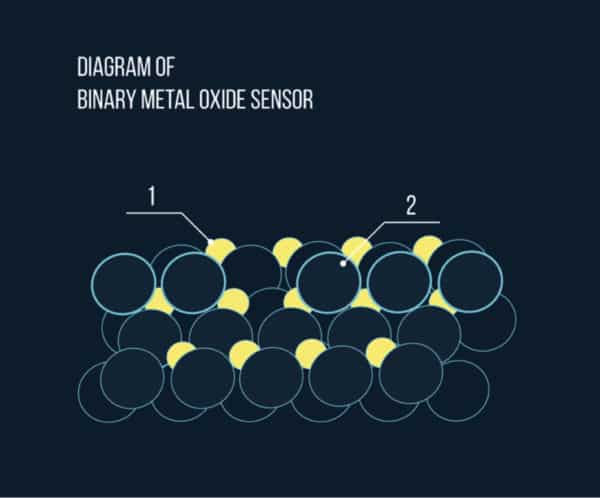
 Russian scientists have demonstrated that nanosensors can be created which are sensitive enough to detect environmental pollutants and, potentially, to identify terrorist threats in the form of gaseous compounds.
Russian scientists have demonstrated that nanosensors can be created which are sensitive enough to detect environmental pollutants and, potentially, to identify terrorist threats in the form of gaseous compounds.
In a new study published in the journal Sensors and Actuators B: Chemical, a team of researchers from the Semenov Institute of Chemical Physics of the Russian Academy of Sciences and the Moscow Institute of Physics and Technology have concluded that sensors based on binary metal oxide nanocomposites can be altered to detect a specified range of chemical compounds in the air.
“It is demonstrated that by changing the nature of the components and their relative locations in such nanofibers, the sensitivity and selectivity of the sensor system can be tailored to various chemical compounds,” say the study’s authors.
Nanosensors -materials that can detect the presence of compounds at a molecular level- are currently in wide development across many technology sectors, with their potential applications seemingly limitless. From biosensors that can detect the presence of tumors to iron oxide sensors capable of detecting E. coli bacteria in food to military applications in the detection of explosives and the monitoring of soldiers in the field, it’s all part of the trend towards an Internet of Nano Things (IoNT), which industry experts predict will deploy up to 30 billion nanosensors worldwide by the year 2020.
The new study focuses on binary metal oxide nanofiber sensors which involve one component that works as a catalyst and the other an electron donor with a high density of conductive electrons. The detection of environmental pollutants and the presence of toxic gases is made possible due to the ability of the binary sensors to absorb gas molecules.
“The use of composite metal oxide systems can lead to improved efficiency and selectivity of conductometric sensors, and enable the development of sensor systems with the desired operating properties,” say the study’s authors.
“Choosing the right sensor composition can make a device at least ten times more effective and enable an exceptionally fast response, which is crucial for preventing terrorist attacks,” says Prof. Leonid Trakhtenberg of the Department of Molecular and Chemical Physics at the Moscow Institute of Physics and Technology.
At the University of Alberta in Edmonton, research is continuing on nanosensor technology which can be used in the oilsands industry to detect trace amounts of chemicals. Dr. Thomas Thundat, Canada Excellence Research Chair in Oil Sands Molecular Engineering, and his team have pioneered a wireless method of powering nanosensors, one which could have far-reaching applications beyond the oil and gas sector.
Charles van Neste works on Dr. Thundat’s team and spoke to the Globe and Mail about the potential uses of the new “quasi-wireless capacitive power transfer.” “It started out being on a single wire, but we very quickly found out that you could do it over surfaces,” says Charles van Neste. “Once you can do things over surfaces, then the capabilities just go through the roof because surfaces are everywhere.”
Dr. Thundat’s team sees their nanosensor powering technology to have applications in precision agriculture, where sensors no longer requiring batteries or wires could enable pinpoint crop dusting at the precise locations of outbreaks.
Leave a Reply
You must be logged in to post a comment.



 Share
Share Tweet
Tweet Share
Share




Comment